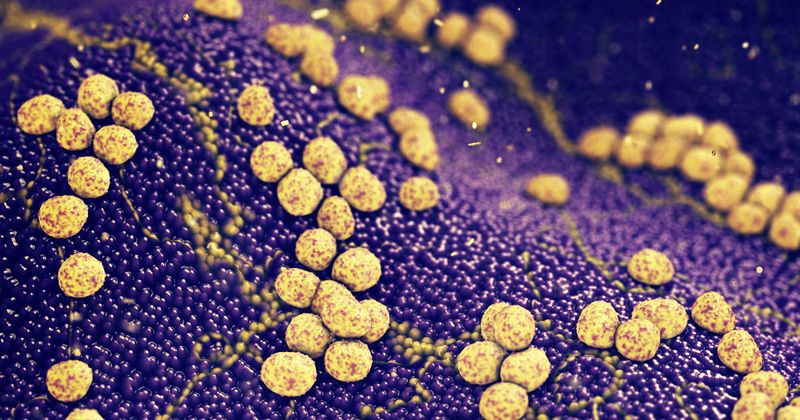Staphylococcal enterotoxin sensitization linked to inflammation in pediatric asthma
Sensitization to Staphylococcal enterotoxin was correlated with type 2-high inflammation among children with moderate to severe asthma, according to a study published in The Journal of Allergy and Clinical Immunology: In Practice.
Before starting targeted biotherapies, clinicians should assess patients with severe asthma for this sensitization, Mélisande Bourgoin-Heck, MD, MSc, specialist in the allergology department of Trousseau Hospital, Sorbonne University, and colleagues wrote.

The researchers assessed 377 children (67% boys; mean age, 73.3 months; standard deviation, 57) with severe and moderate asthma or severe and moderate recurrent wheeze, including 233 in preschool and 144 in grade school, from the prospective Severe Asthma Molecular Phenotype cohort at Trousseau Hospital in Paris between 2011 and 2015.
Assessments included sensitization to S. aureus enterotoxins (SEs) A, B, C and D and to toxic shock syndrome toxin-1.
Study results
Researchers identified 85 children with specific sensitization toward SE, including 26 (11.2%) of the preschool children and 59 (41%) of those in grade school. Children with SE sensitization were older than those who were not sensitized (111 vs. 62 months; P < .01). Older children also had a greater burden of sensitization in terms of specific IgE levels and number of sensitizations.
Compared with children who were not sensitized to SE, children with SE sensitization had more features of allergy, including active atopic dermatitis (32% vs. 18%; P = .02), food allergy (29% vs. 10%; P < .001) and allergic rhinitis (62% vs. 39%; P < .001), as well as greater sensitization to food and respiratory allergens.
Further, the children with sensitization to SE had more features of type 2 inflammation in addition to higher rates of total IgE (67% vs. 13%), blood eosinophilia (47% vs. 18%) and eosinophils in bronchoalveolar lavage (48% vs. 23%; P < .001 for all).
However, the researchers did not find any significant association between SE sensitization and asthma severity or number of hospitalizations for asthma attacks.
Based on a univariate logistic regression analysis, risk factors associated with SE sensitization included age in months, atopic features and eosinophilic inflammation.
A stepwise-selected model of the entire population revealed an association between high rates of total IgE (OR = 8.83; 95% CI, 3.14-24.85) and SE sensitization, which persisted in analyses separately of preschool-age (OR = 9.35; 95% CI, 1.92-45.45) and school-age (OR = 8.06; 95% CI, 1.9-34.2) children.
The association between bronchoalveolar lavage eosinophilia and SE sensitization was not significant in the overall population (OR = 2.73; 95% CI, 0.97-7.68), although it was in the preschool (OR = 3.95; 95% CI, 1.18-13.29) and grade school groups (OR = 4.11; 95% CI, 1.12-15.09) separately.
Conclusions, implications
Overall, SE sensitization increased through childhood and was associated with type 2-high inflammation. The higher SE sensitization among older children corroborates associations between severe asthma and SE sensitization in adults, the researchers wrote.
The increase in IgE levels with age, particularly among atopic patients, suggests that there is a pathophysiologic role for the immunologic response to SEs in stimulating the generation of IgE, the researchers continued.
The significant associations between SE sensitization and active AD, allergic rhinitis and food allergy across the entire population are in line with previously found associations between SE sensitization and various atopic multimorbidity in the literature.
The association between SE sensitization and high rates of IgE and tissular eosinophilia mostly in the grade school children demonstrates how the pathophysiologic pathway for asthmatic inflammation develops during childhood as well, the researchers wrote.
SE sensitization could then be a marker of type 2-high inflammation related to eosinophilic inflammation, the researchers continued, without specific sensitization to inhaled allergens.
The researchers advised clinicians to assess patients with severe asthma for SE sensitization, which could be an additional marker of type 2-high inflammation, eosinophilia or total IgE, before beginning targeted biotherapies.
As this profile appears to develop during childhood and increase with age, the researchers wrote, a prospective cohort study is needed to determine whether SE sensitization could be a risk factor for persistent asthma.
